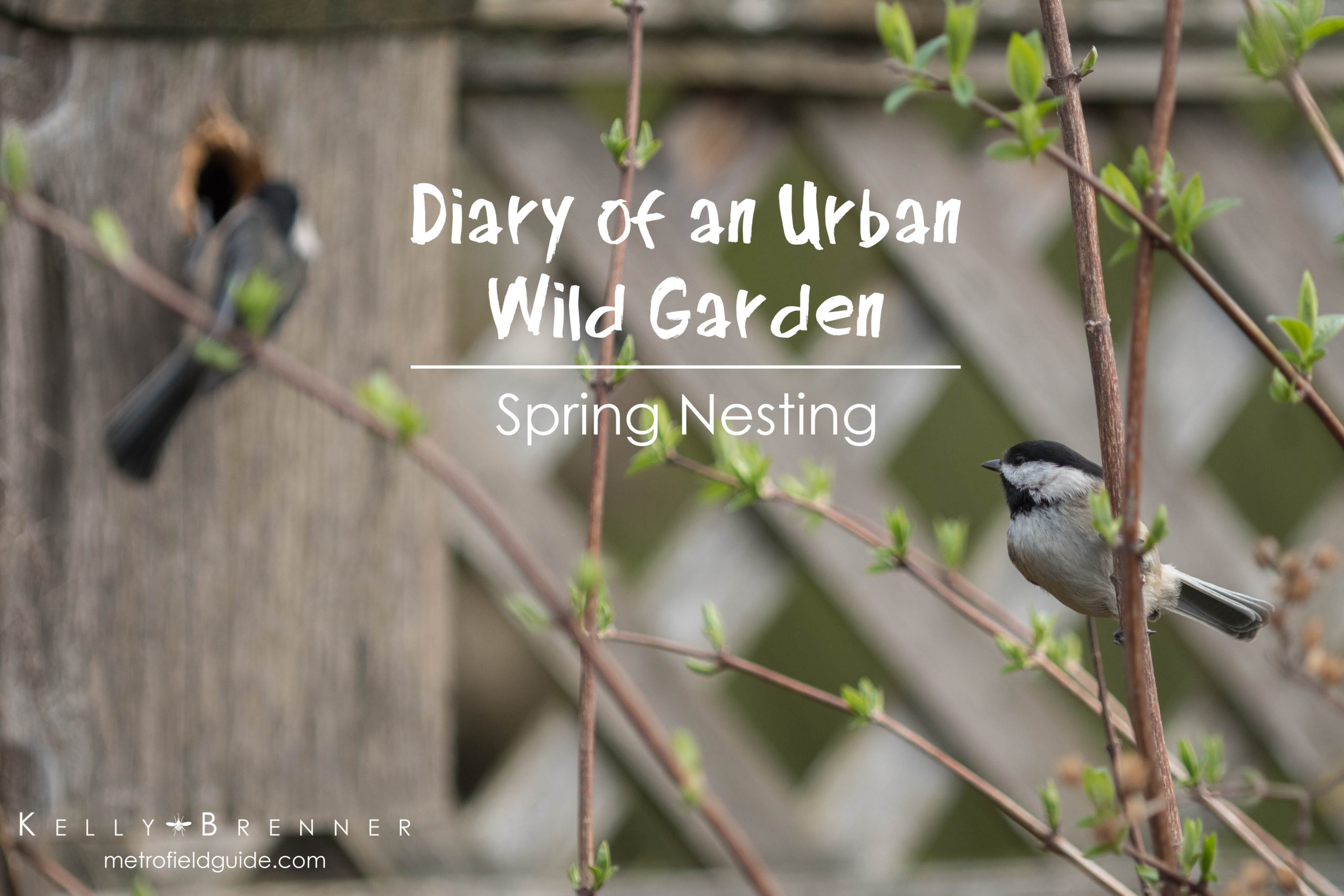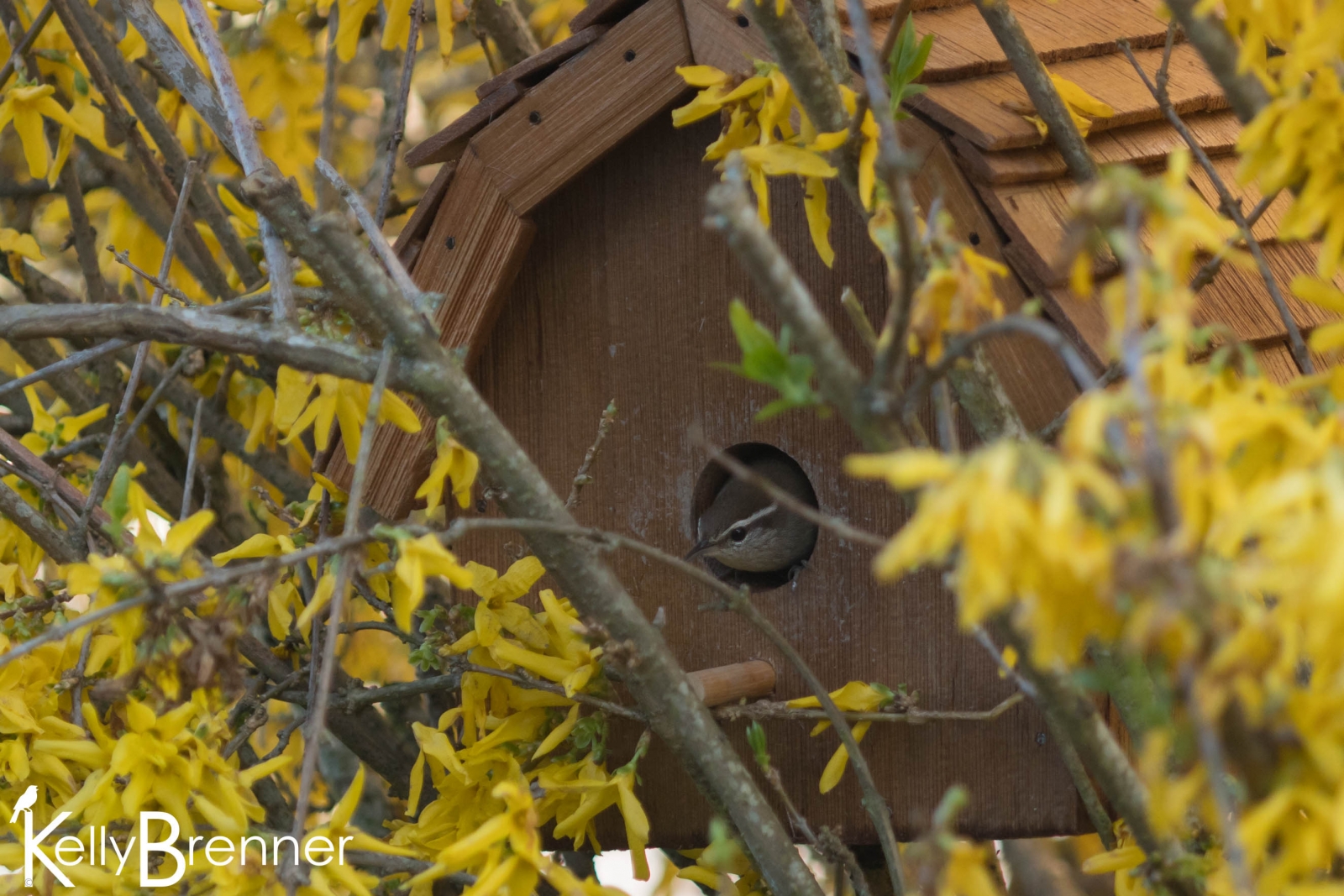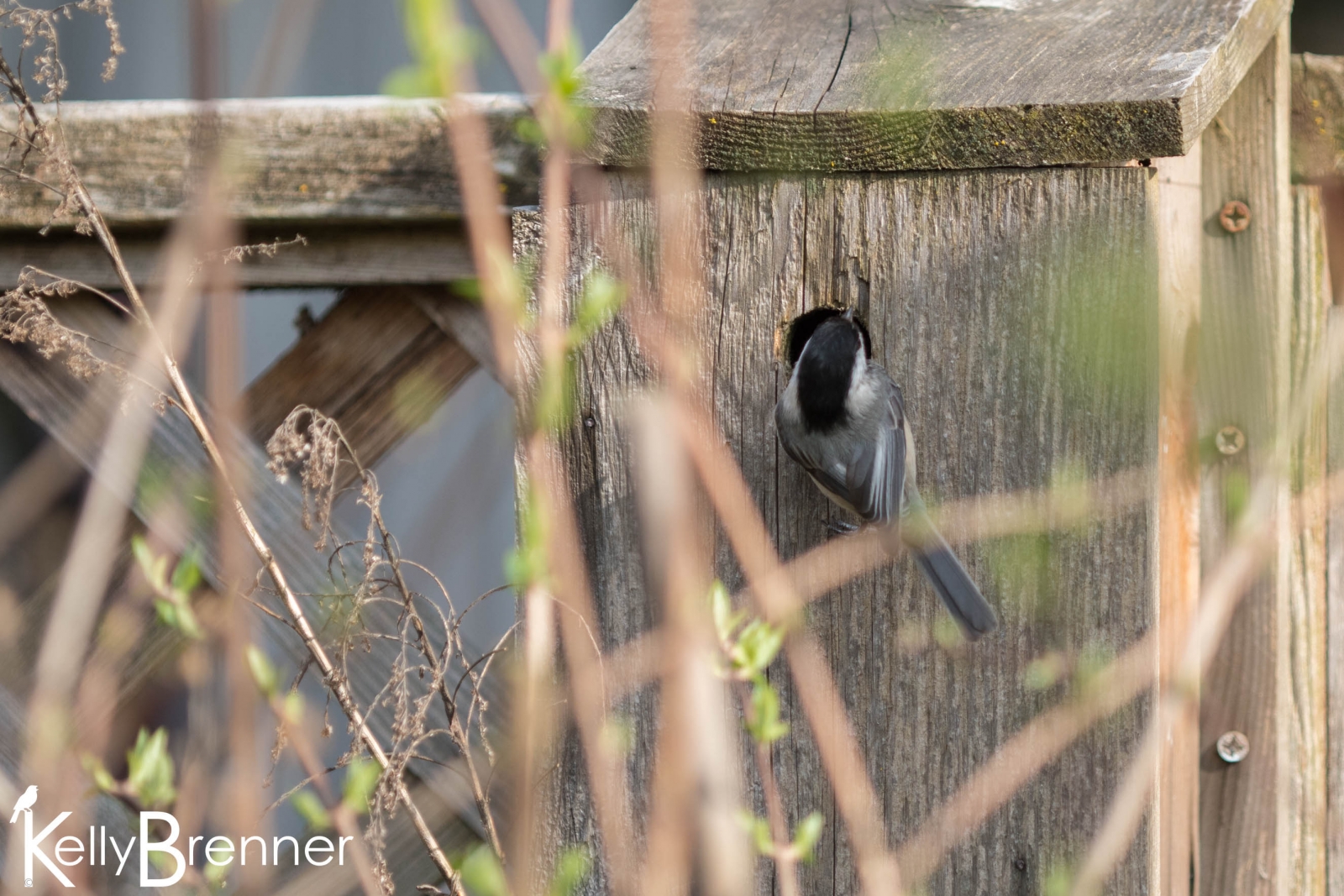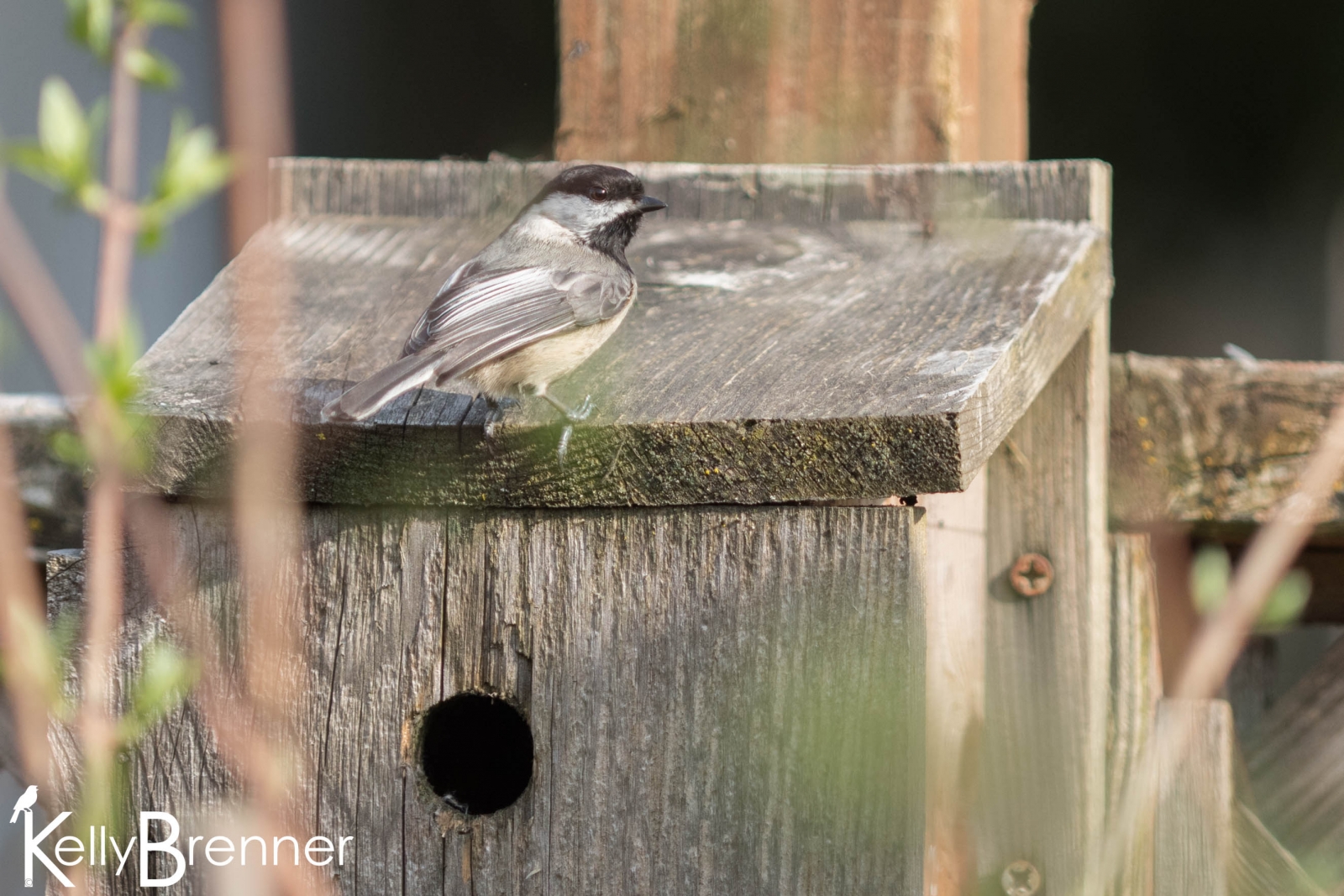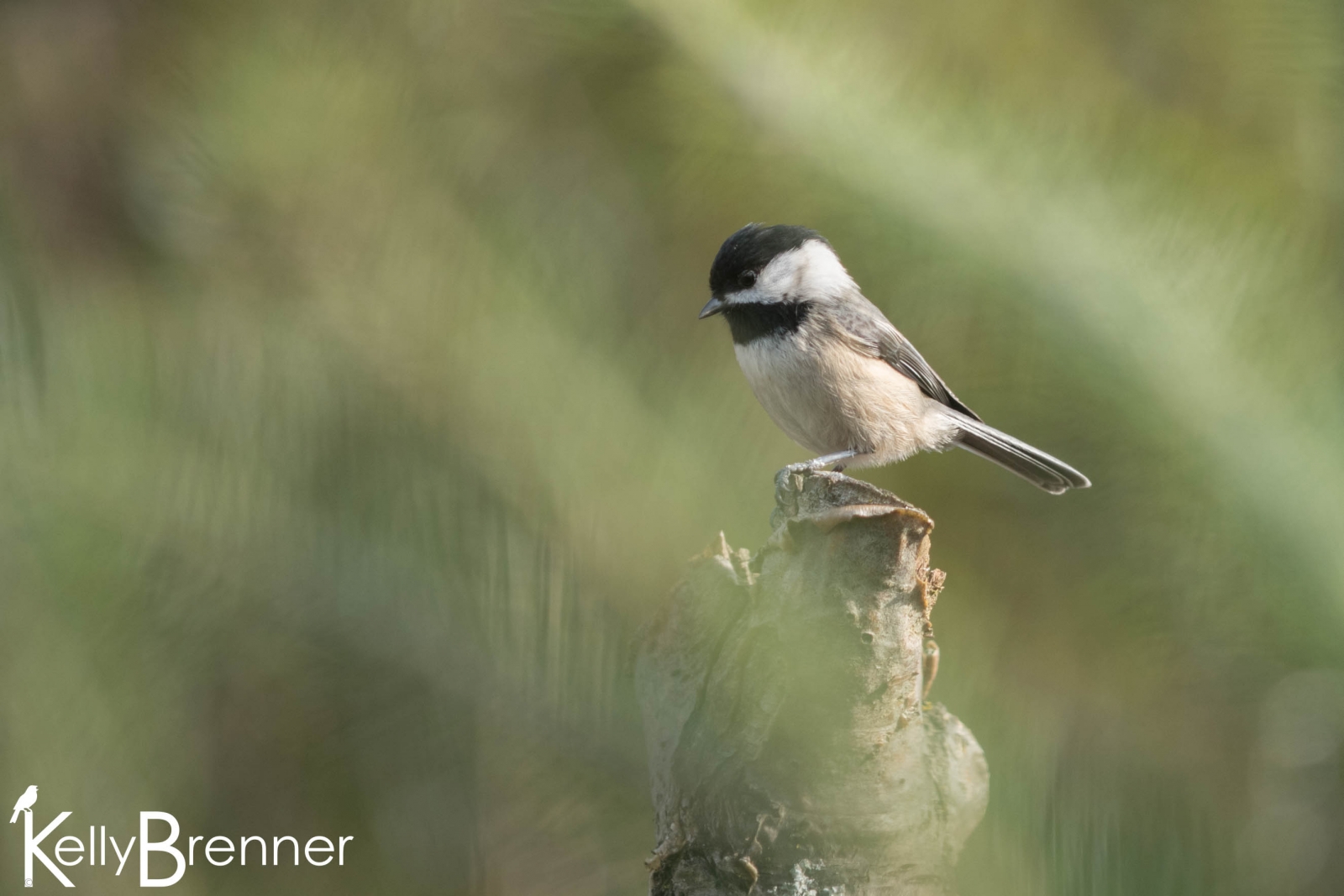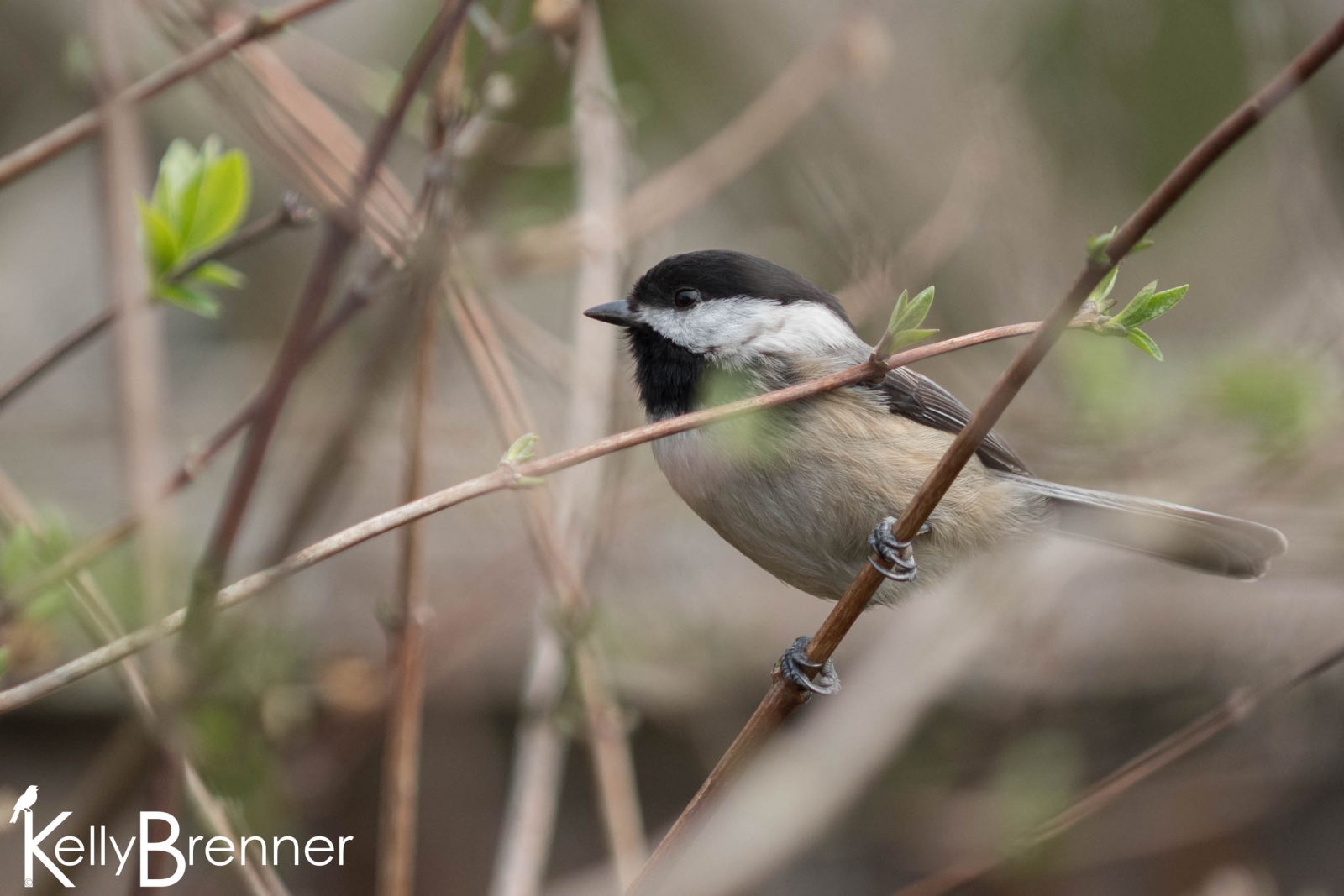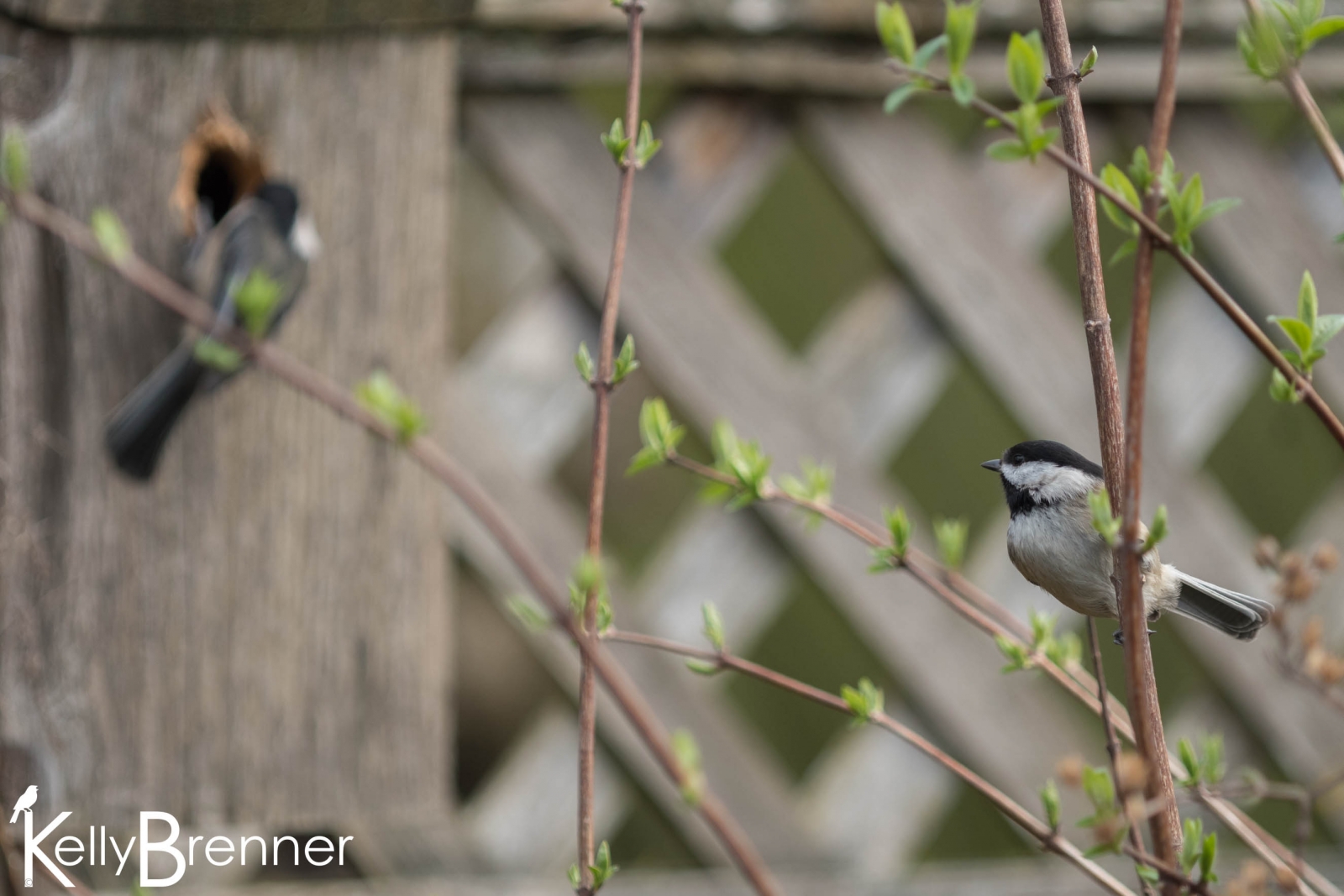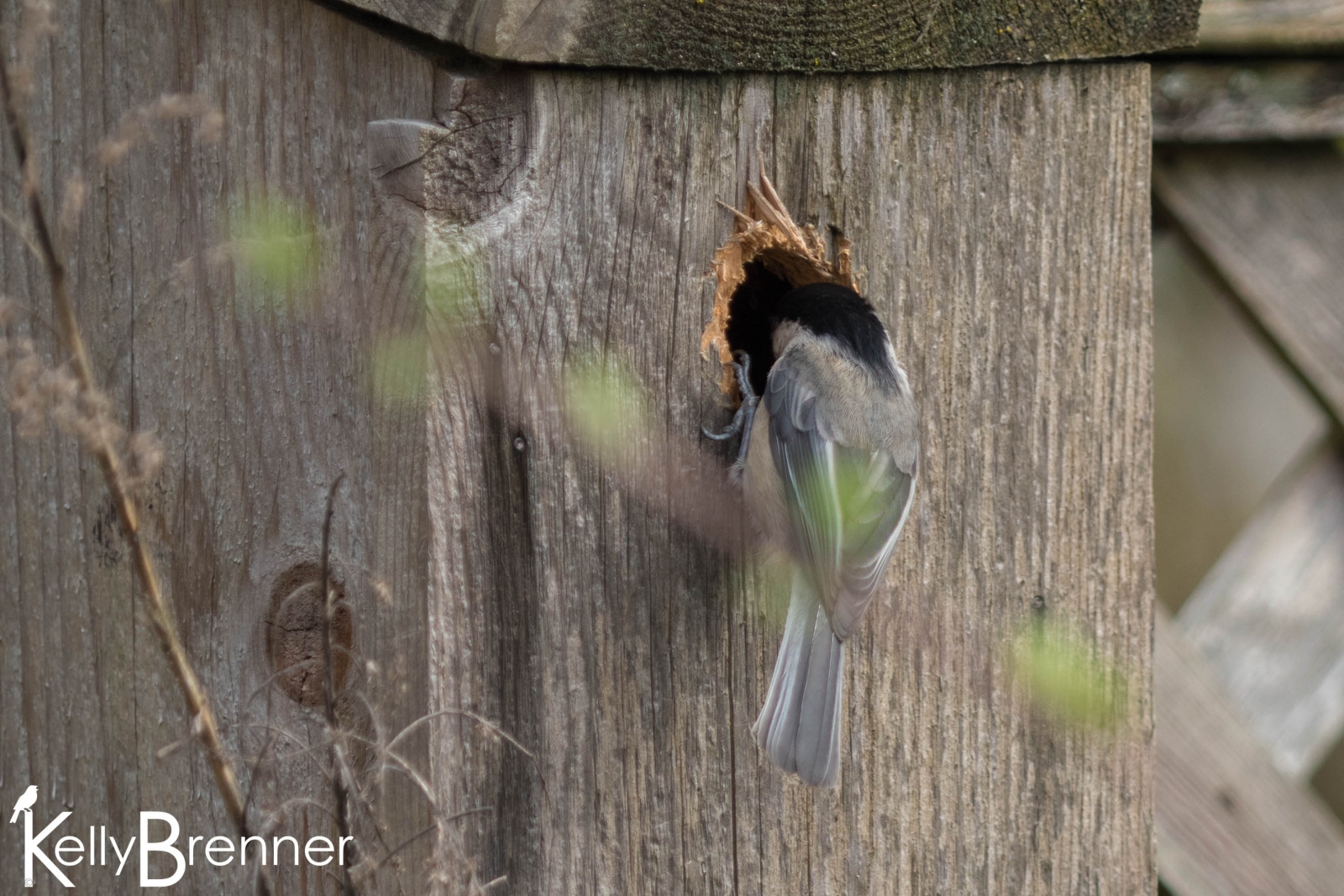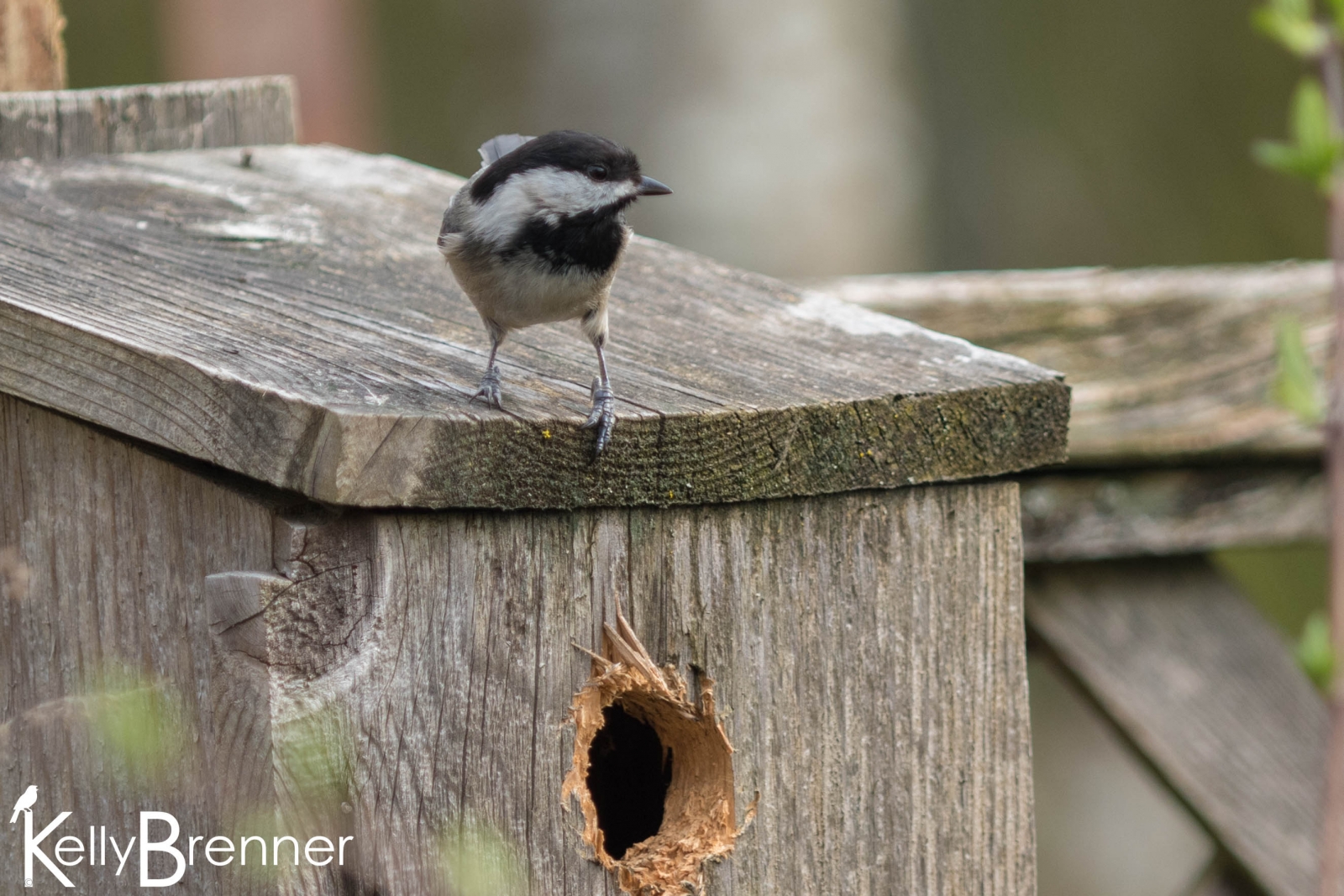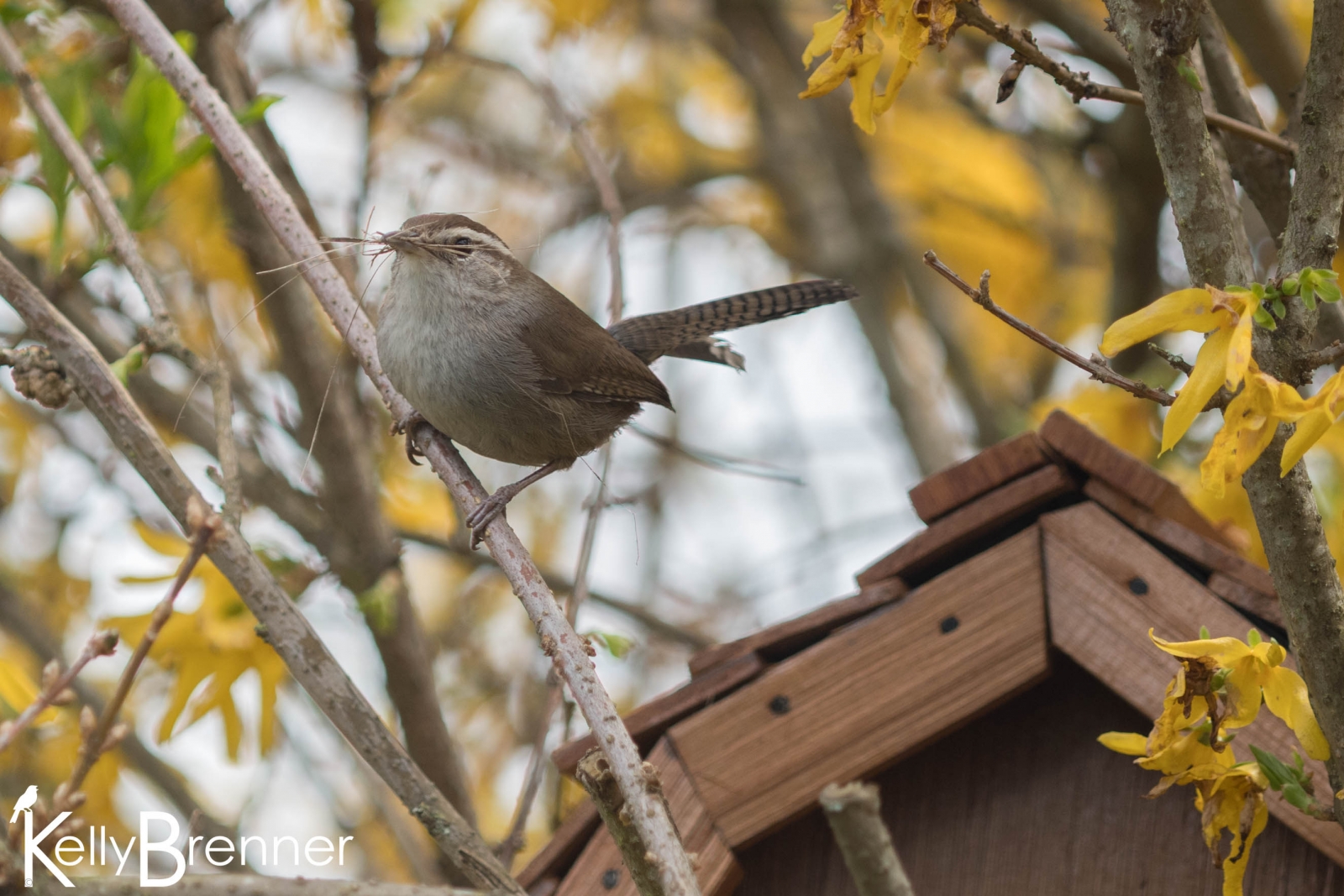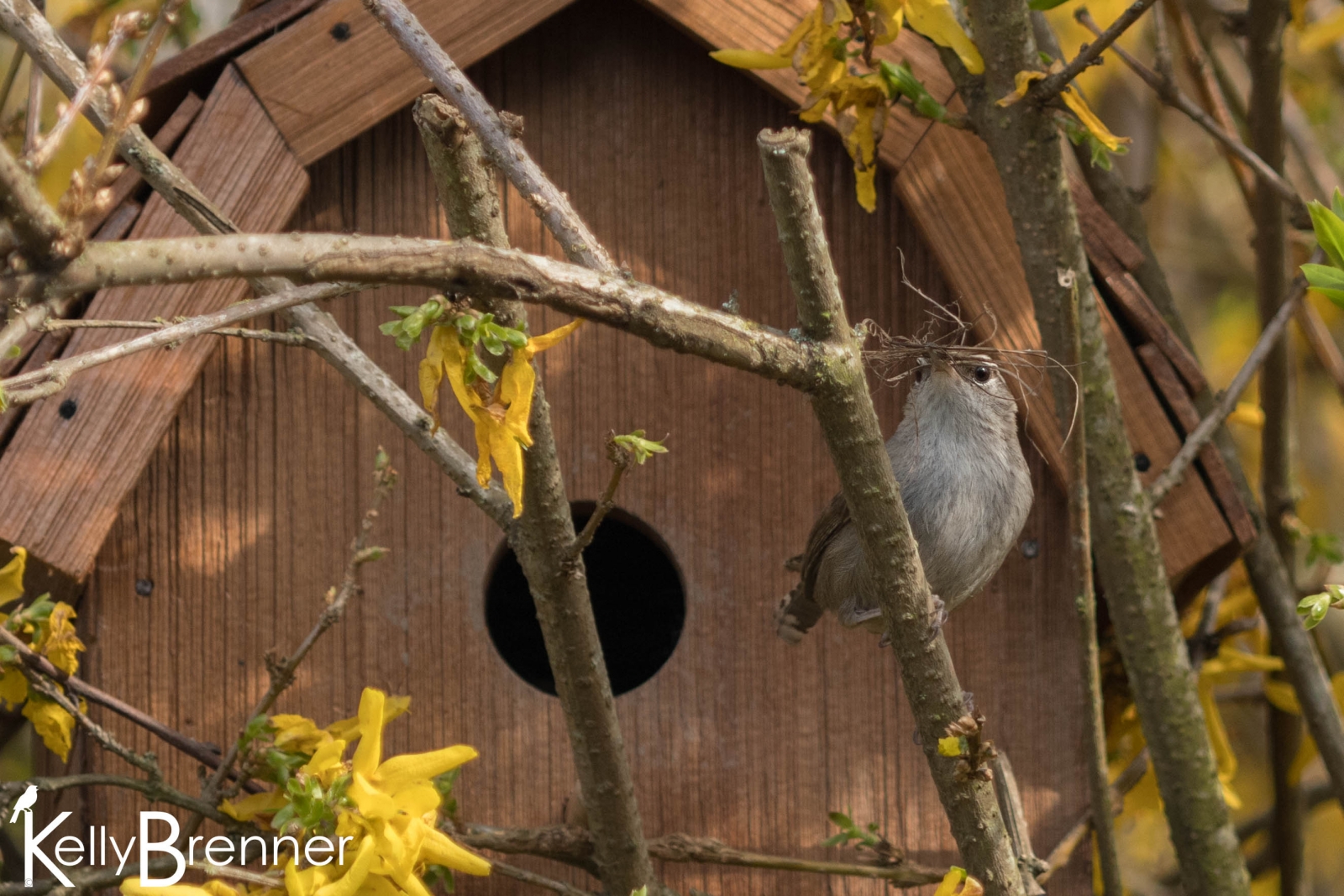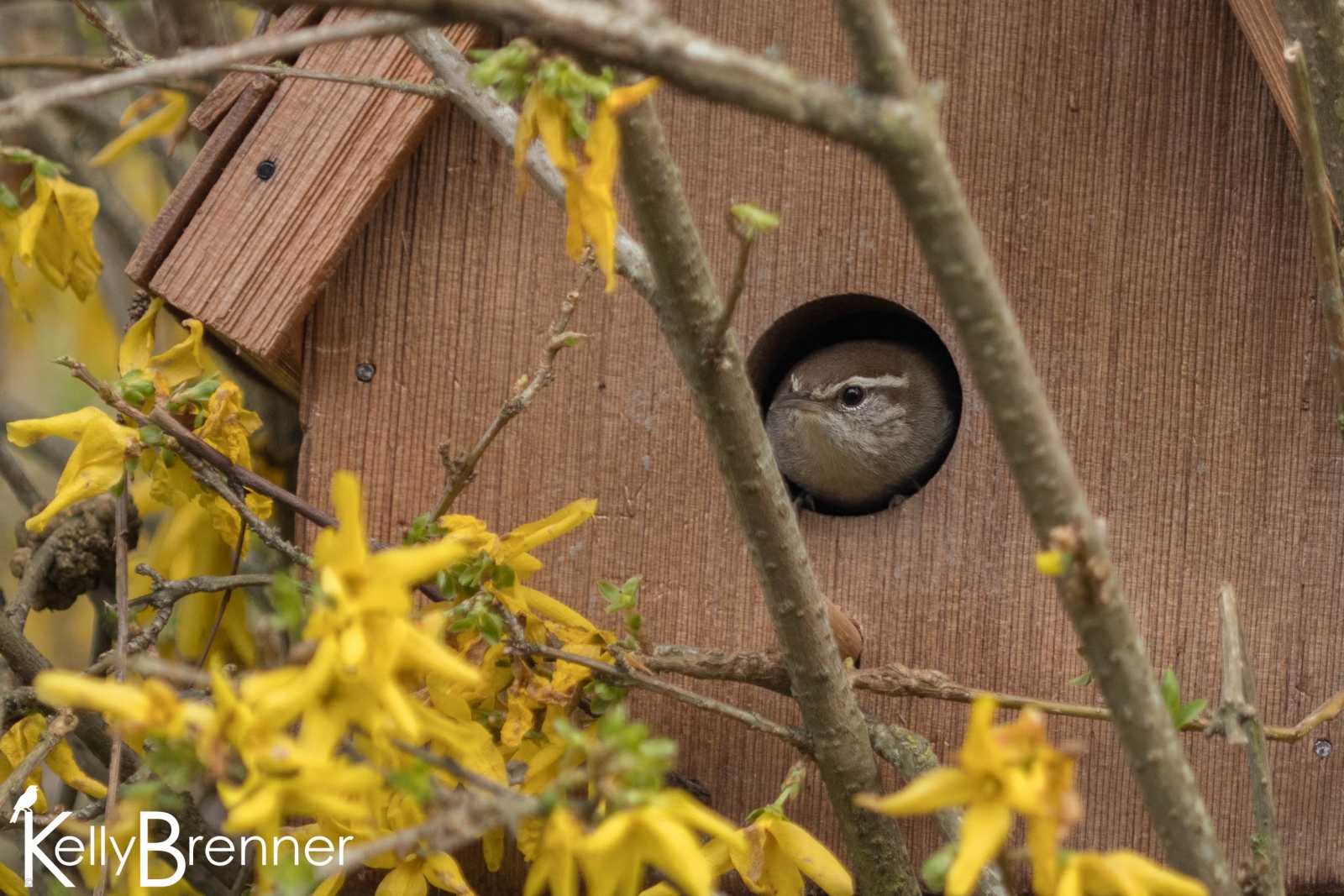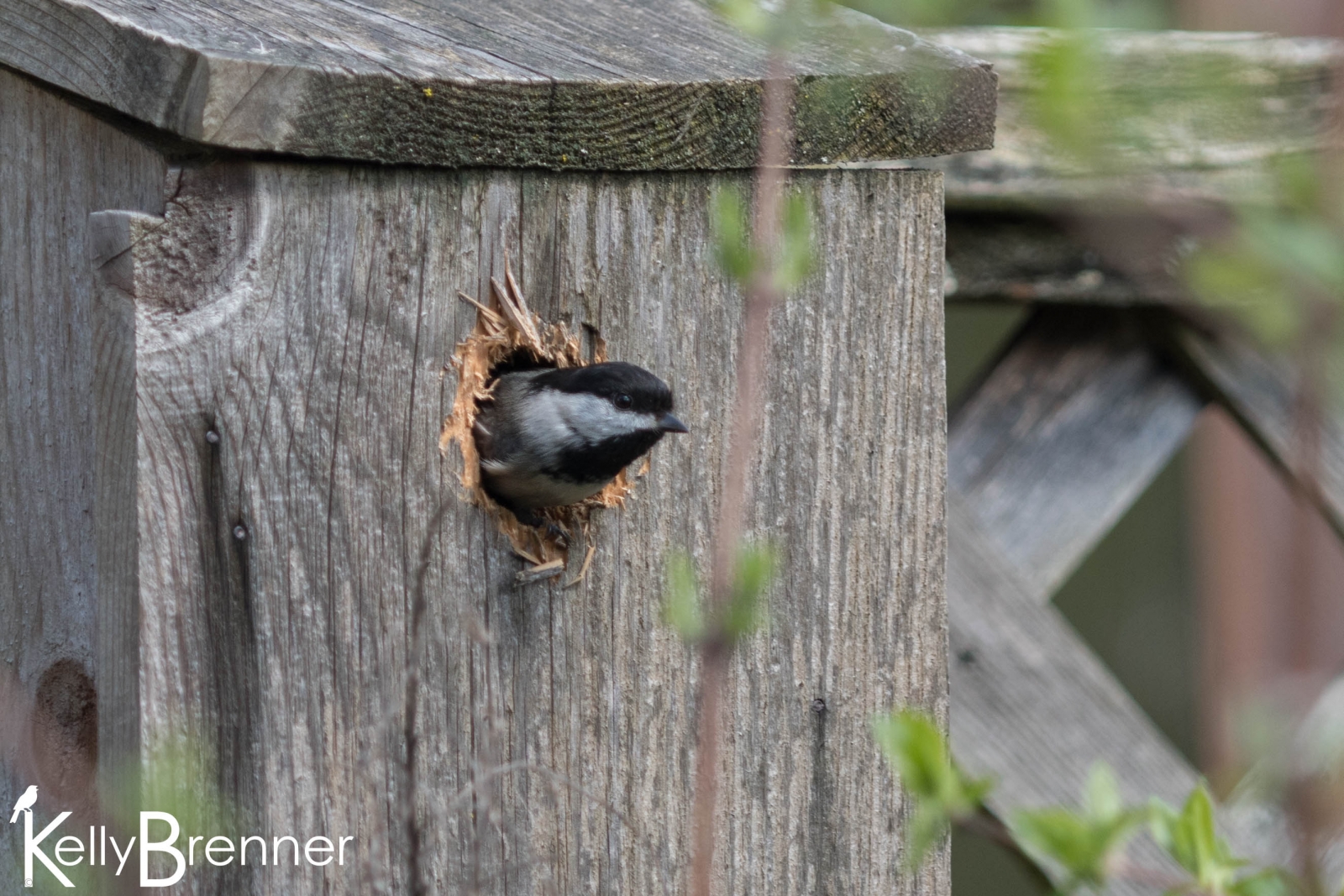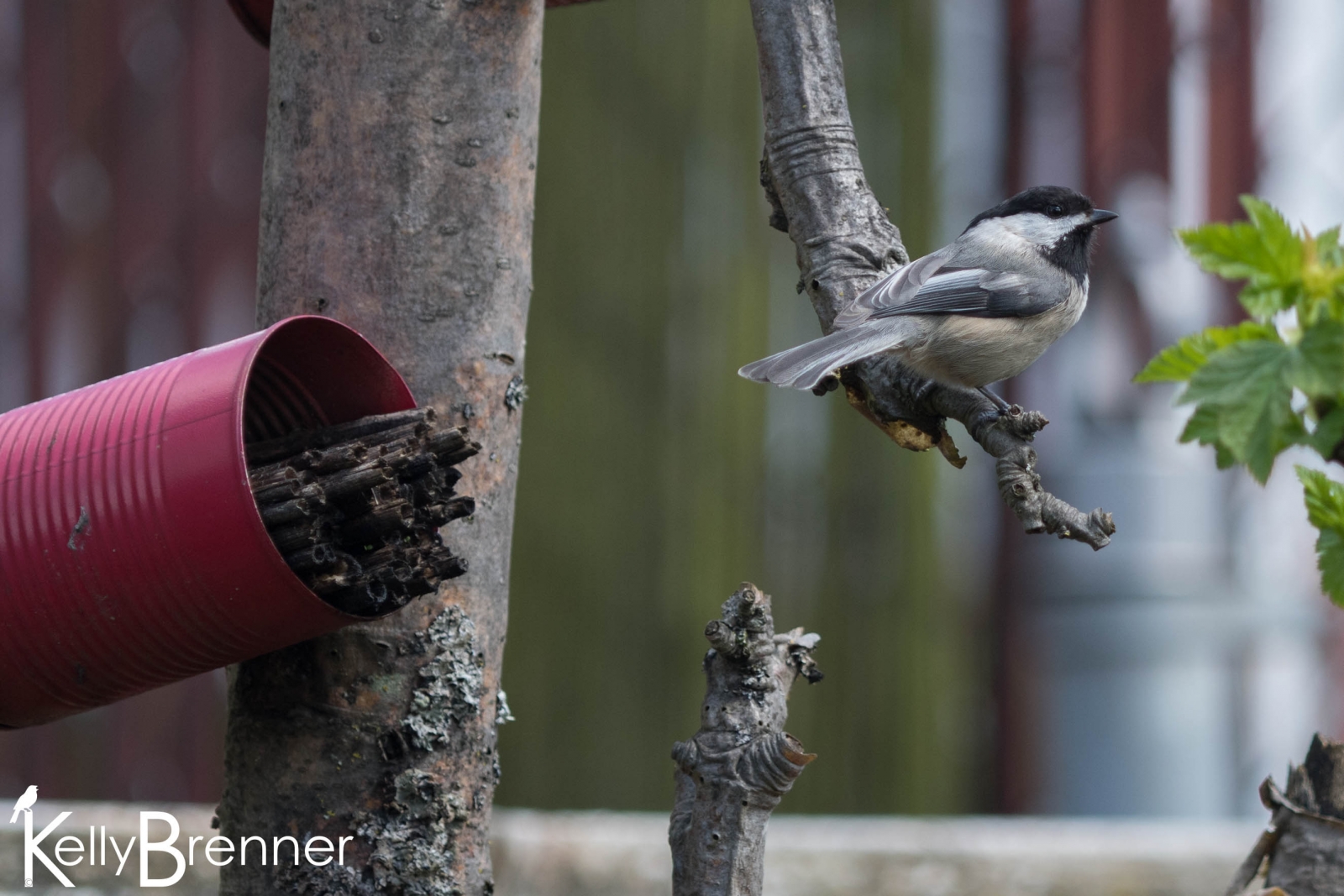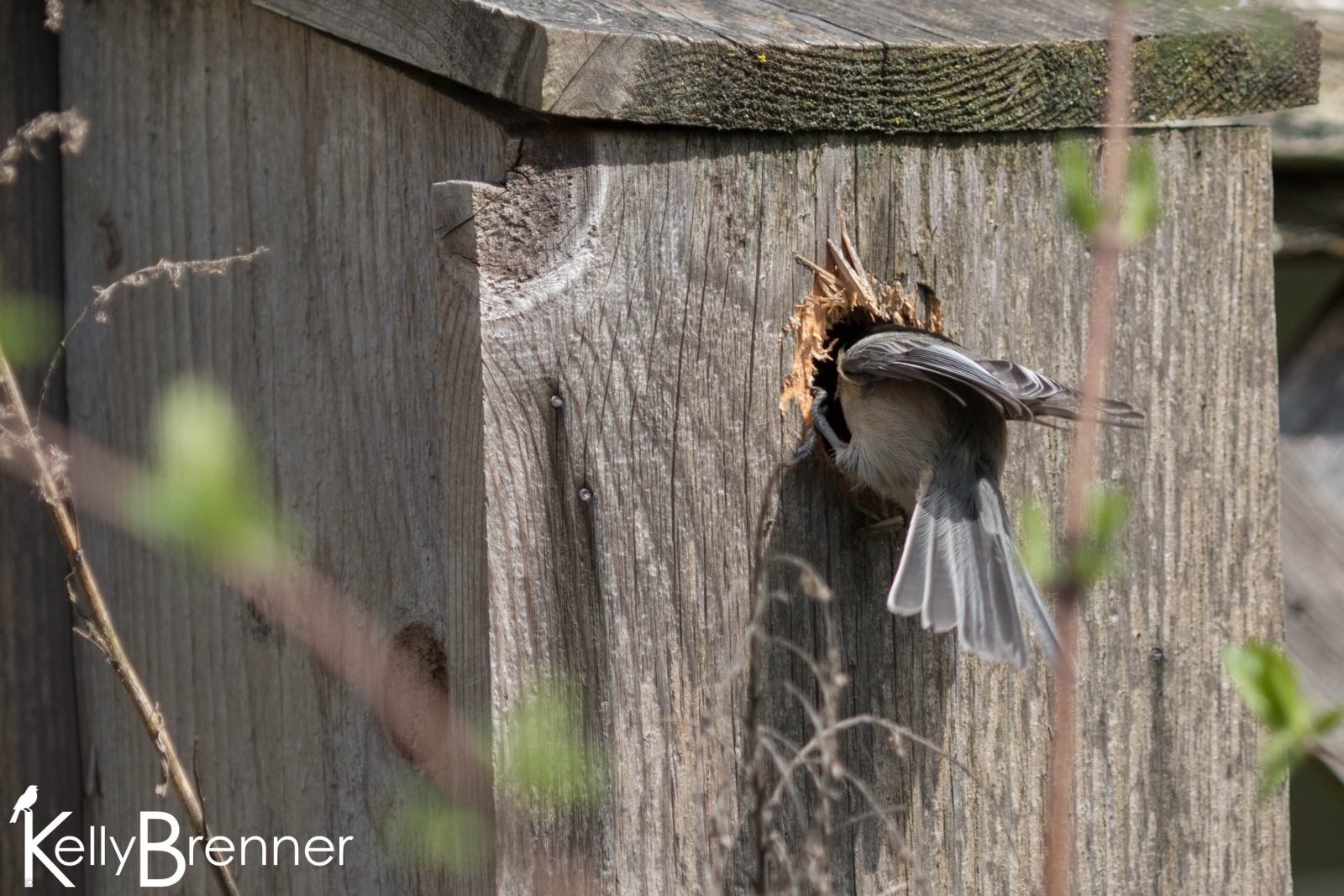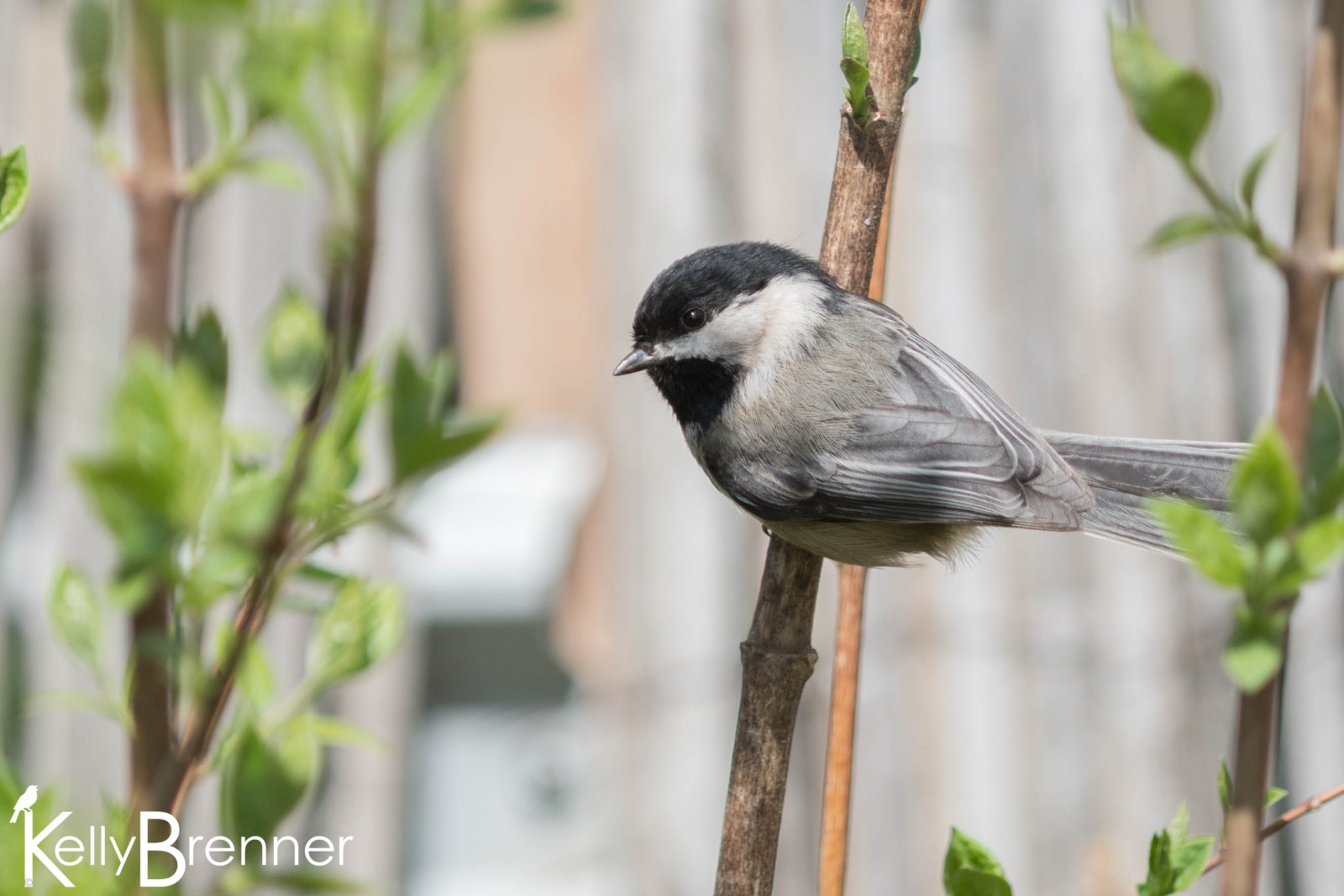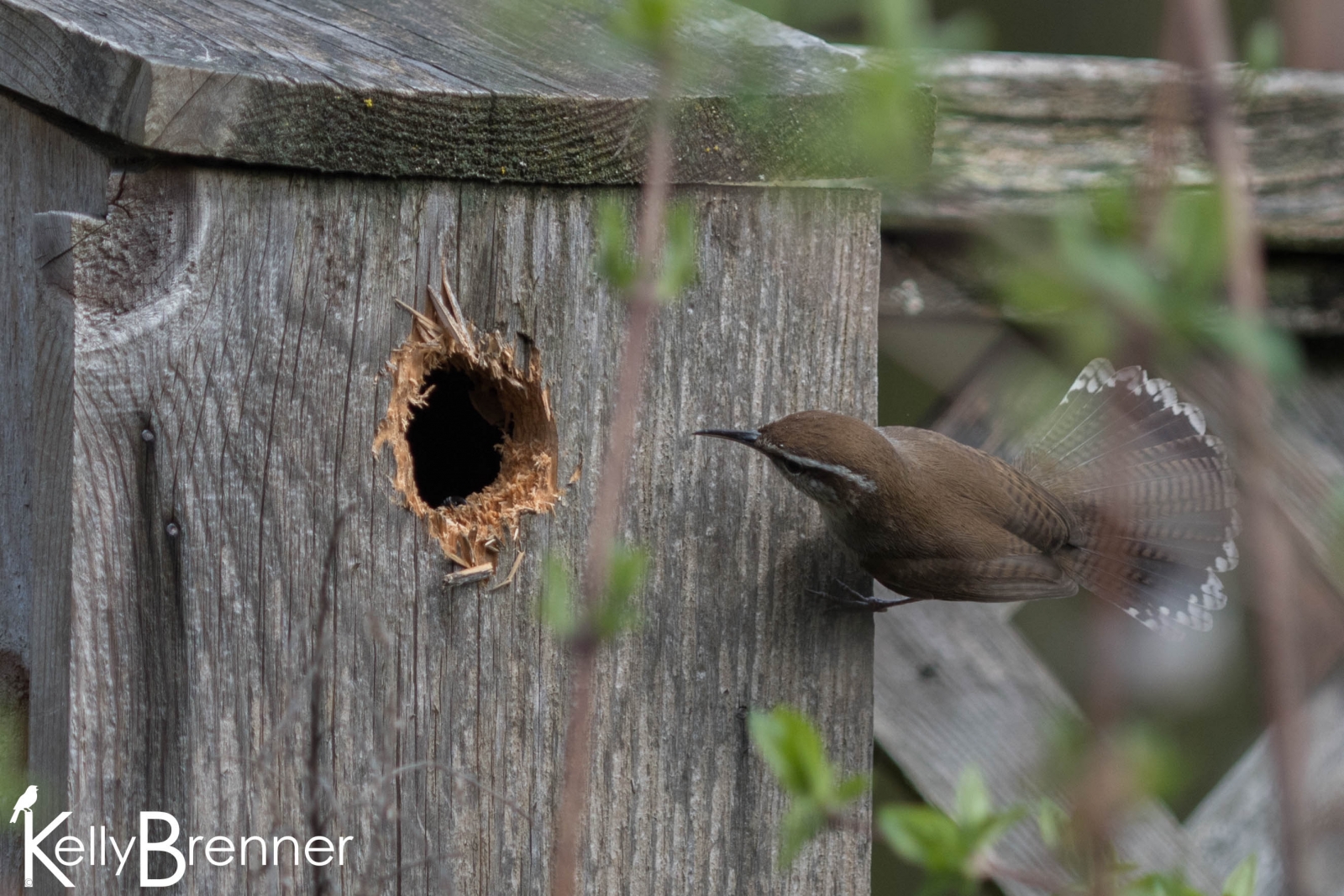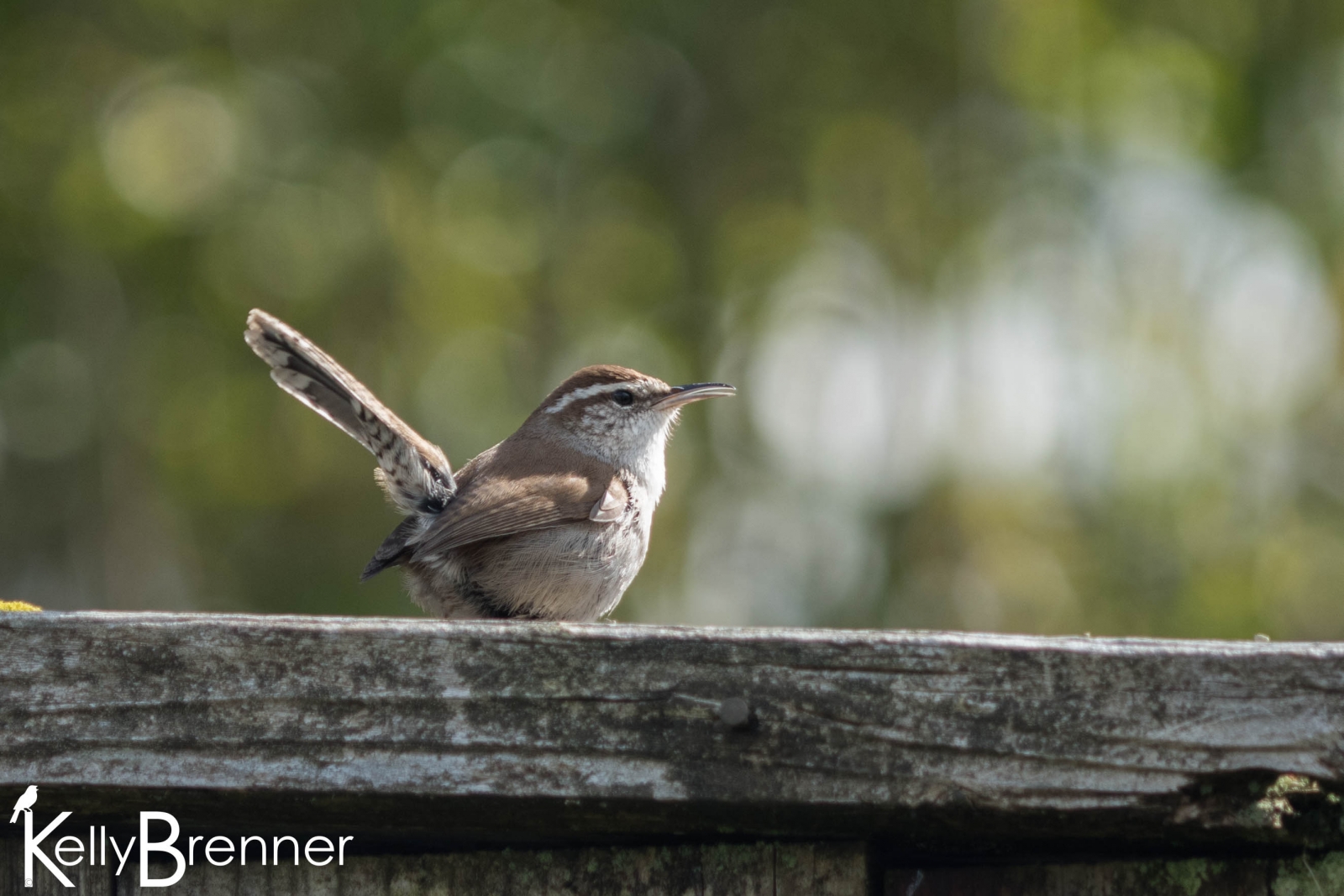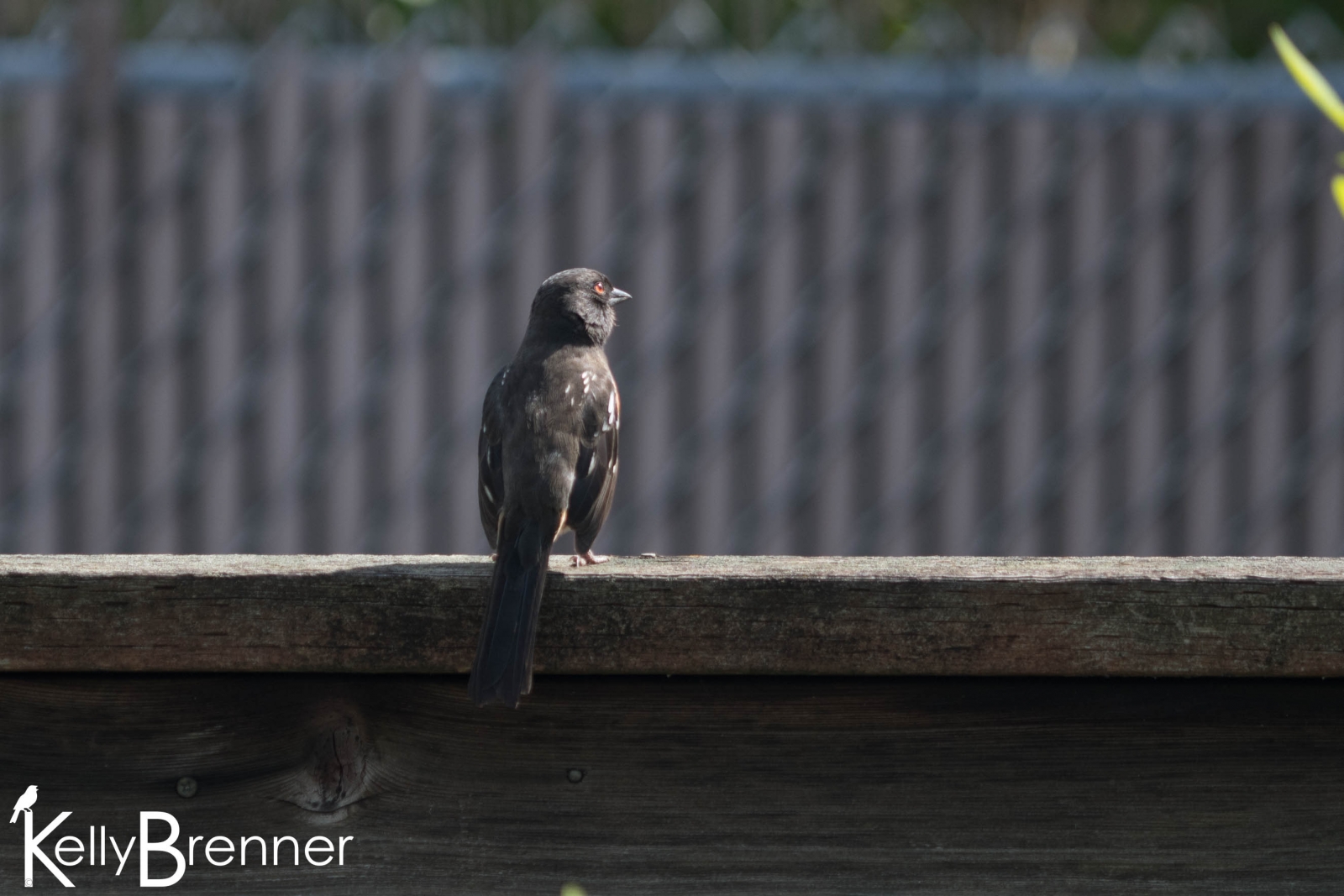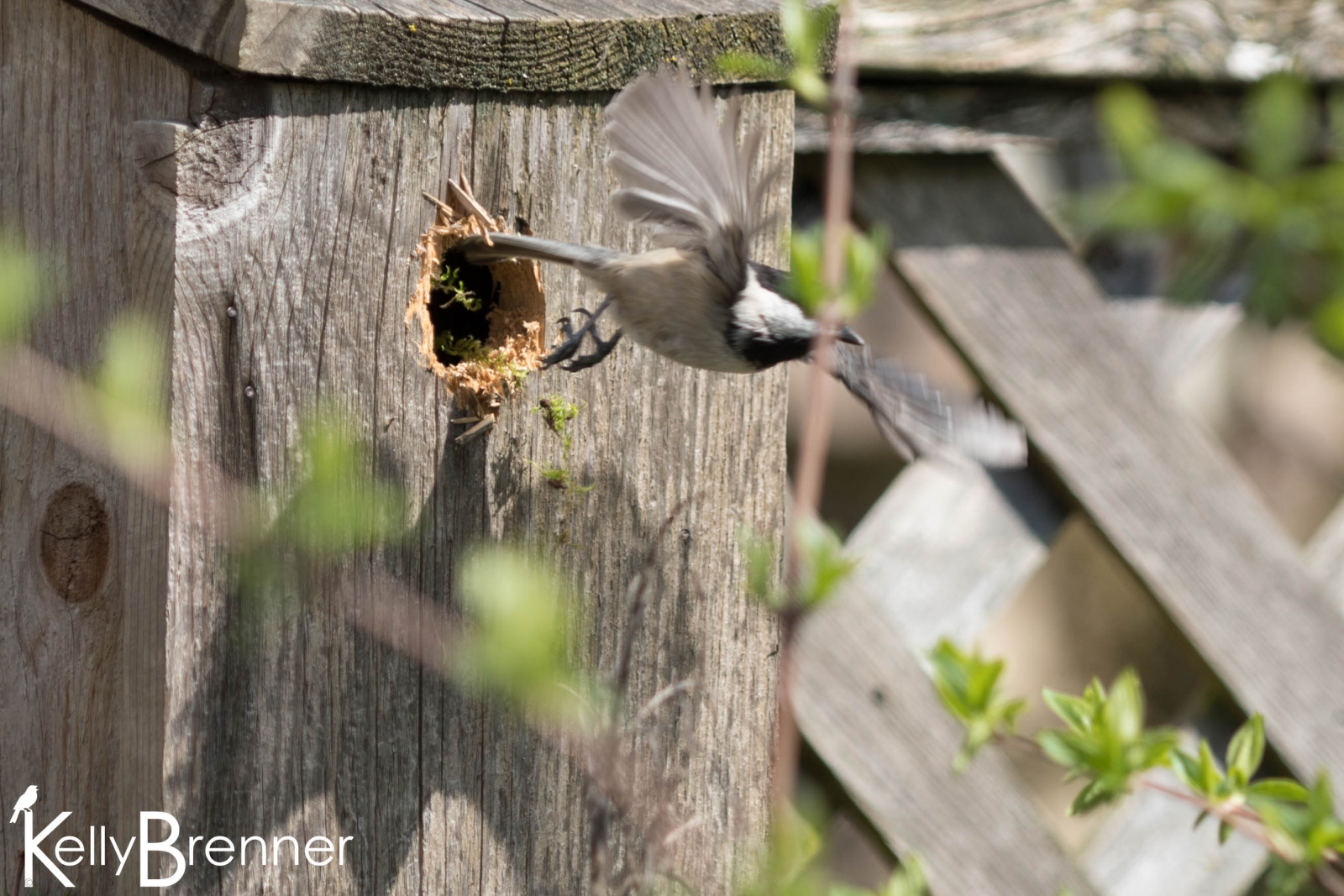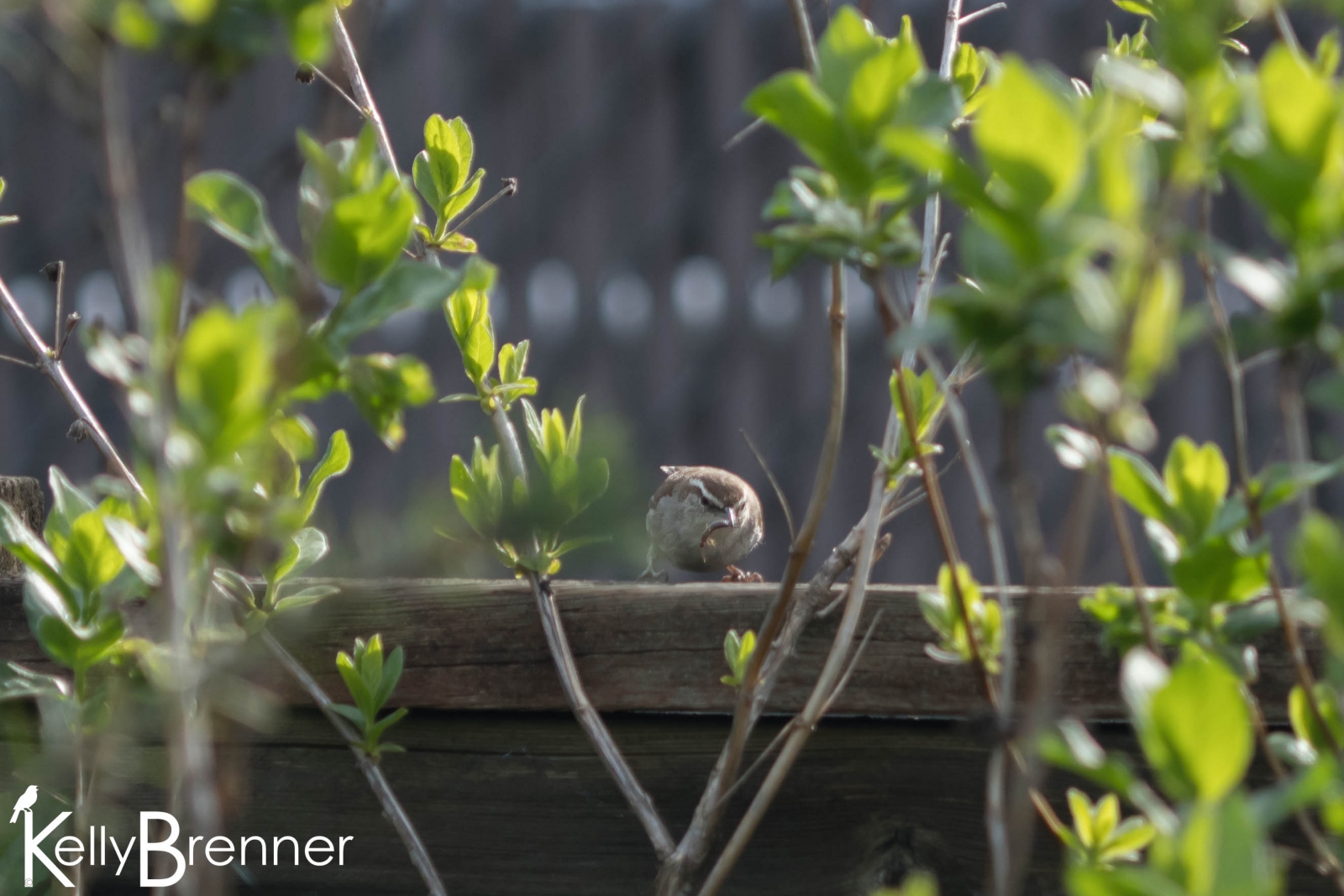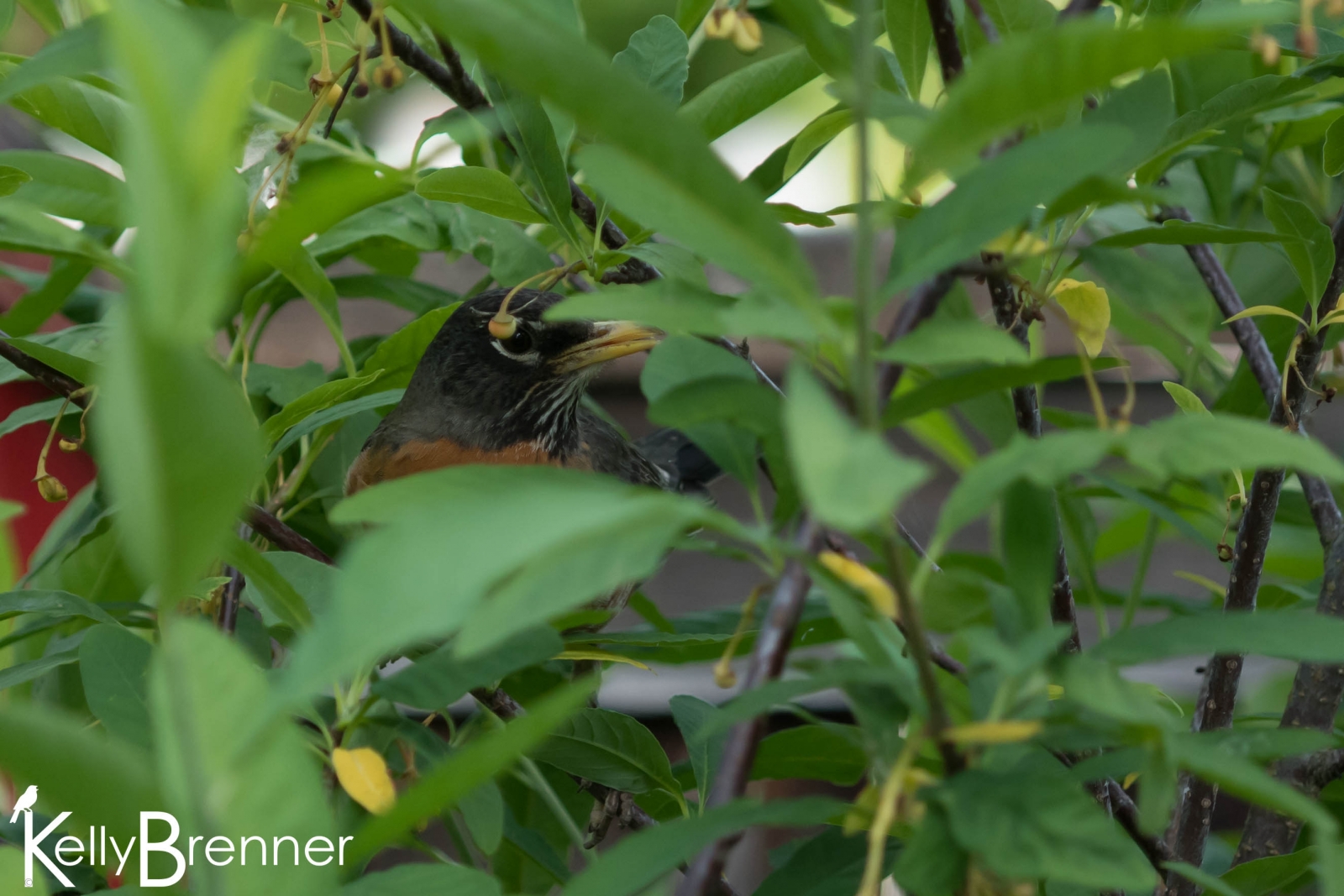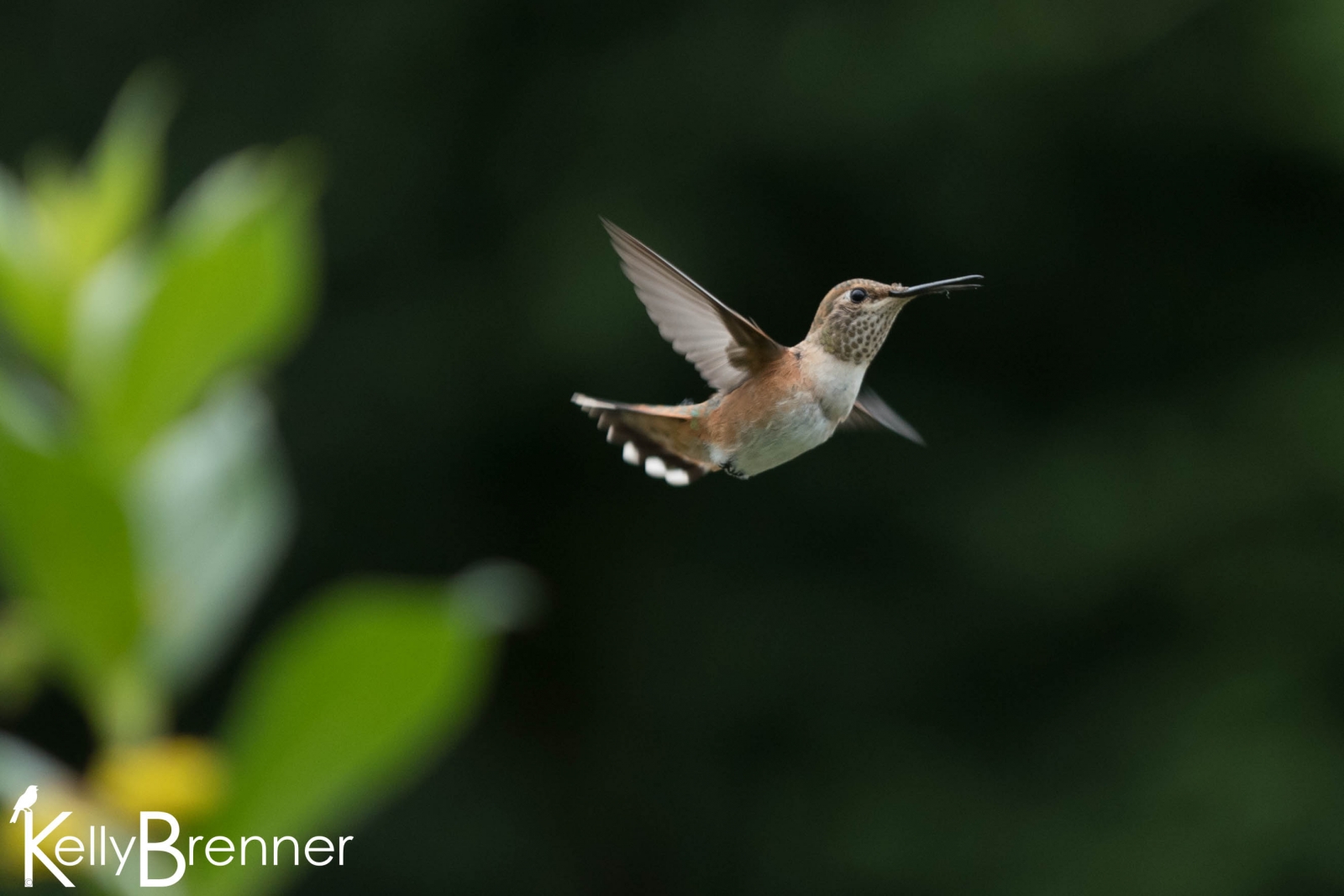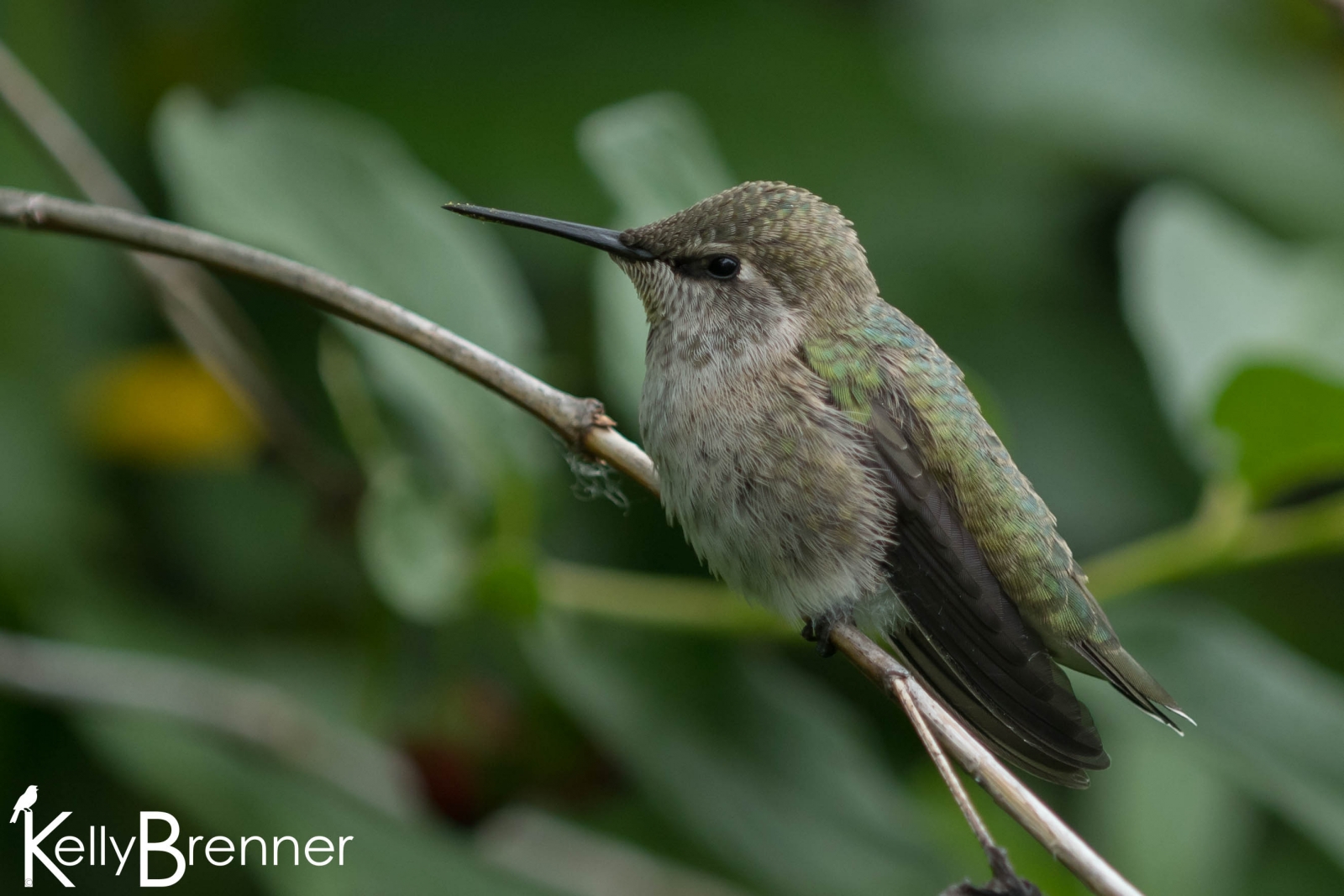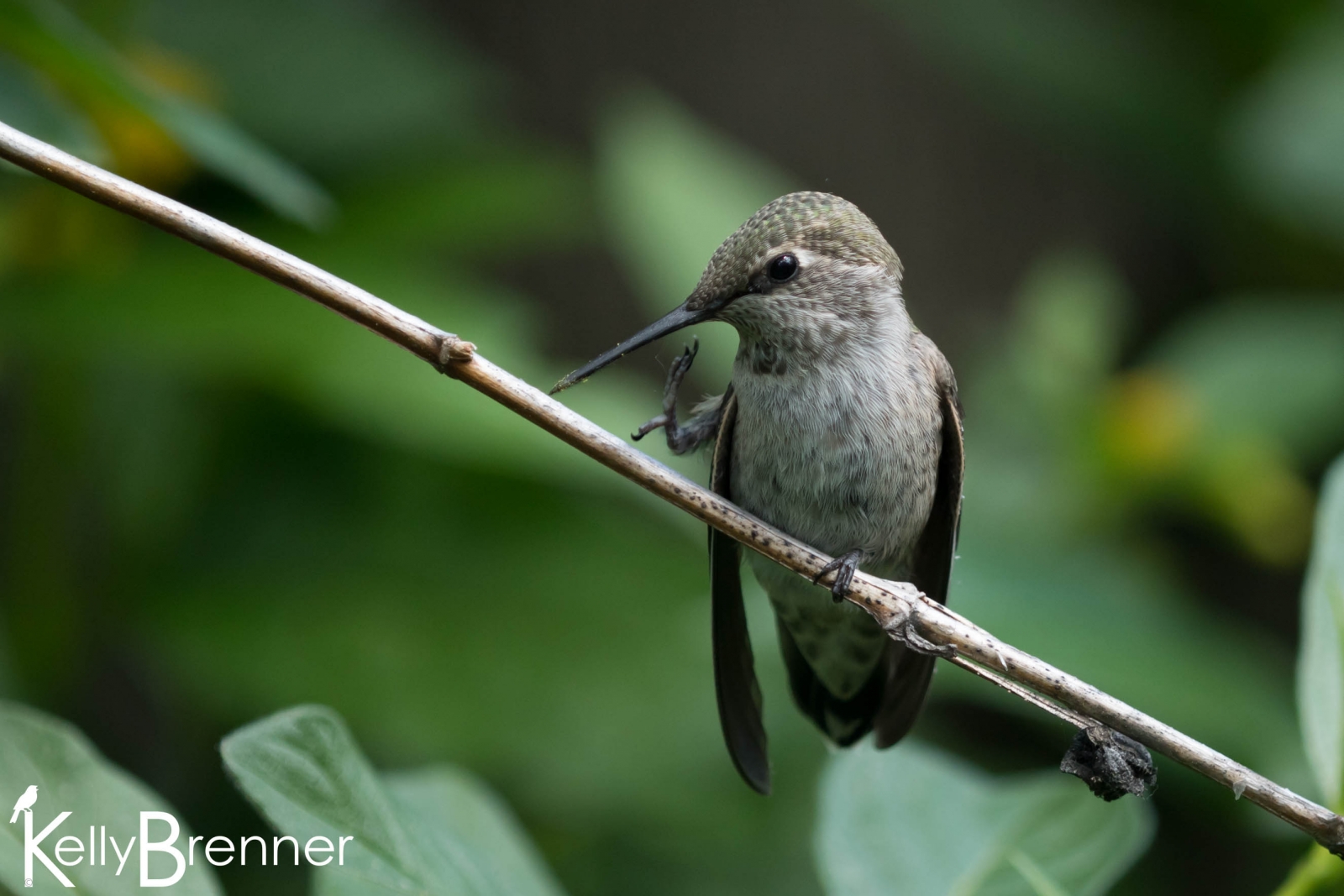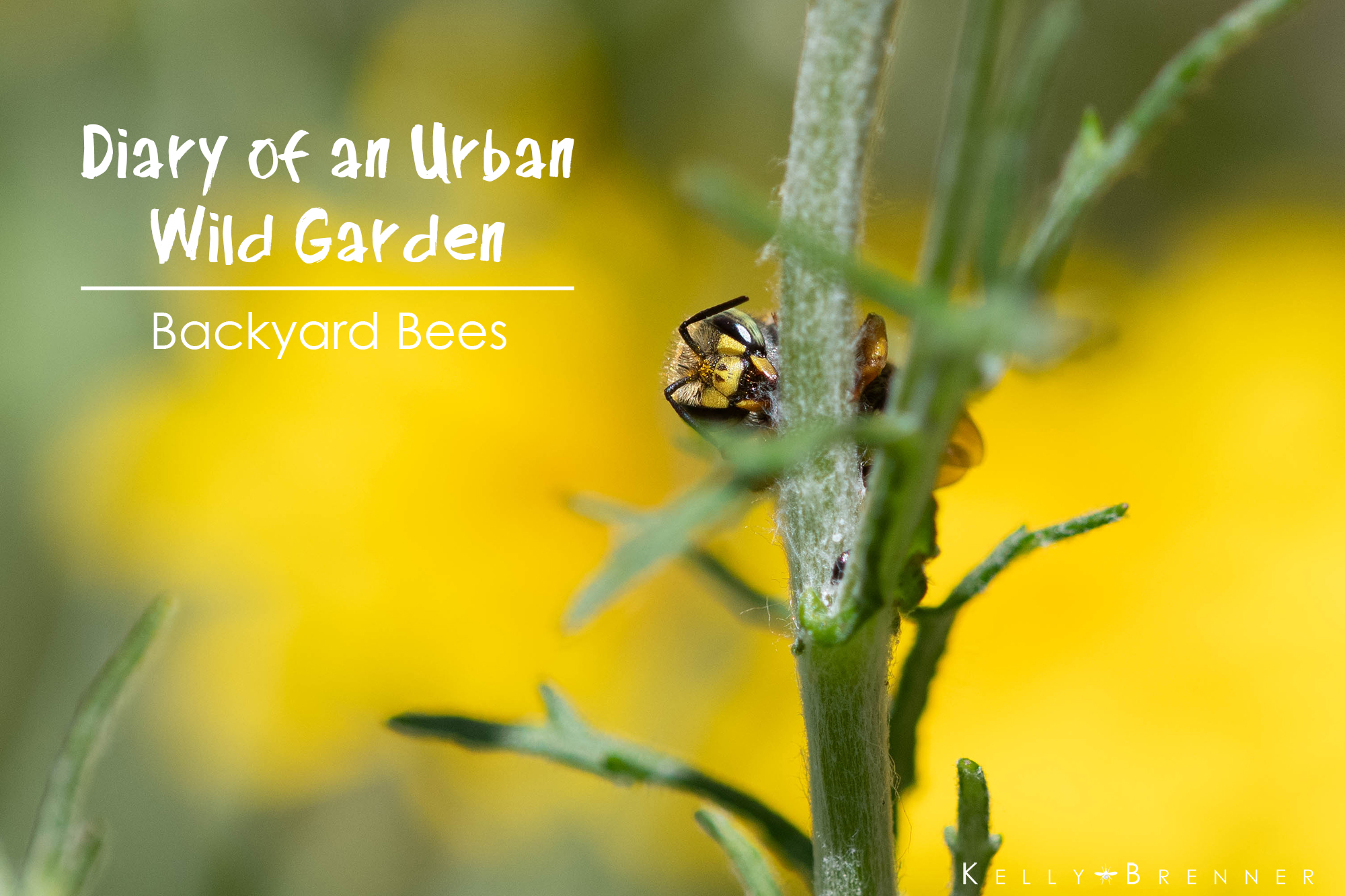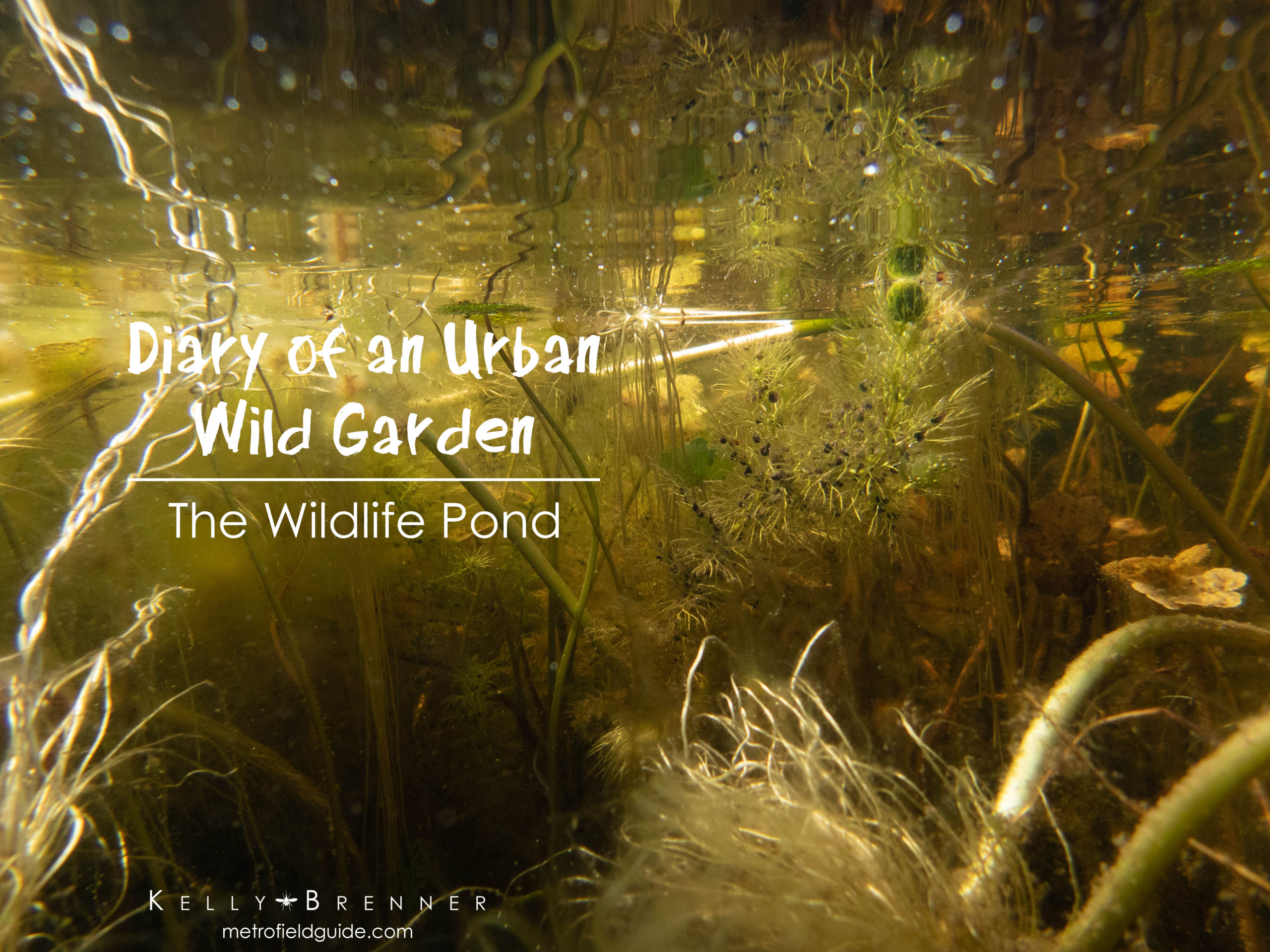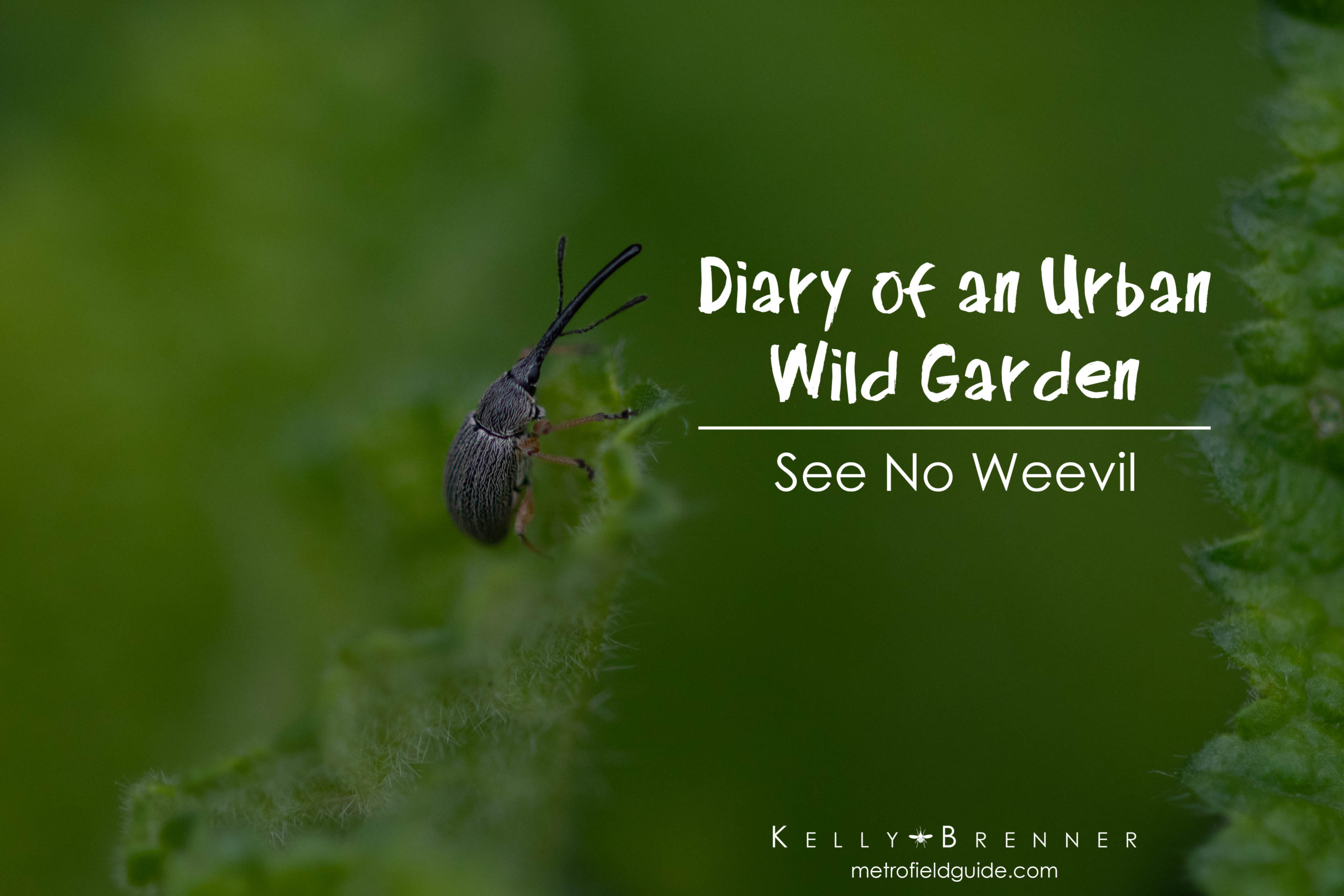This spring our wildlife garden has seen a lot of activity. Last year, during my 365 Nature Project, we watched a Bewick’s Wren pair make a nest in our backyard nest box, while a pair of American Robins built a nest in our front yard. This year the wrens returned, but opted for a different nest box. In our backyard I have put up a red box, which the wrens chose last year. I also have a blue box hanging from the garage which has never been used. Then there’s the wood box built by my husband, also never used. Last year I found another wood box at a thrift store and stashed it in the garage. It’s meant to be mounted on a post and this spring I just wedged it into our forsythia for a lack of anywhere better to put it.
To my surprise, the wrens chose the forsythia nest box this spring. I watched them come and go with leaves, twigs and feathers, but I didn’t see two at the same time for a long while. I wondered for a week or two if only one had returned to build a nest, but eventually I saw two at the same time. They must like our neighbor’s chickens, because they frequently brought their feathers to the wren’s box.
While the wrens were busy building their nest, a chickadee pair visited the other wood box and I noticed them pecking at the hole and not going inside. They did this last year as well. I speculated the hole was the wrong size and hacked a larger opening with my drill. They returned to the box almost immediately and went inside, much to my delight. I kept a close eye on them and both Black-capped Chickadees began bringing nesting materials to the box. They were harder to watch because while the wrens would fly to the forsythia and hop around before eventually taking materials inside the box, the chickadees would dive straight in. Once in a while the chickadees would pause on my insect hotel, but they were much more secretive than the wrens.
I know Bewick’s Wrens can be rather fierce with their territories and I worried that they would protest the chickadees as close neighbors. The nest boxes are no more than 20 feet apart, or so. Shortly after the chickadees moved in I saw one of the wrens fly to the chickadee’s box and fan its tail, looking around. I knew one of the chickadees was inside and was prepared to witness a spat. But the wren left without a peep and returned to its own nest. That was the only interaction I witnessed between the two birds.
Eventually I saw both begin bringing insects to the boxes quickly followed by the cheeping of the chicks. But before I knew it both nests were empty and quiet again. Compared to last year, this spring was very wet and cool and I didn’t spend as much time outside watching the nests. I felt I missed out this year after getting such a good long experience watching the wrens last year.
Around the same time I began to realize a Spotted Towhee was hanging around our yard quite a lot and I started to suspect there was another nest in the area. One day while pulling weeds in our neglected corner where a wildlife pond is planned, a towhee jumped out from the plants nearly at my feet and began scolding me. Then I was sure they had a nest in our yard. As a ground nesting bird I knew the nest would be tucked away and so I left the weeds for another day and began to watch instead.
I used my GoPro as a trail camera to figure out where the nest was and got some good video of the towhees visiting their nest. I often watched the adults and heard the chicks begging. Before I could get my camera closer to the nest though, the chicks disappeared. One evening I heard the towhees making extreme alarm calls and I went outside and heard robins, chickadees and even a hummingbird all joining in the alarm. We spotted a cat across the alley and I saw the towhees following it for some time. The nest was quiet and I was worried the cat had taken the chicks. I ventured back to the nest and found it empty. I thought perhaps the chicks may have scattered into the dense foliage so I left.
A short time later I checked out back, and again there was alarm calls. I found the cat, this time on our fence, looking at me. I found a large clod of dirt and hurled it at the cat, hitting the fence directly below it and it fled. The next time I checked all was quiet and peaceful.
But the next day no towhees were around. I watched and listened all morning and still, no towhees. Eventually I checked the nest again and found it empty. I do not believe they fledged because I had only started hearing them about a week ago. I suspect the cat took them.
In happier news, the plants have burst open and are providing a feast for wildlife. The Osoberry has set a small amount of fruit, but it has attracted robins. The Twinberry has a steady stream of Anna’s Hummingbirds, one which often rests on the branches. A week ago I noticed a Rufous Hummingbird at the plant, a first for our wildlife garden. I’ve heard a lot about the conflicts between Rufous and Anna’s Hummingbirds, but in this instance, the two flew close together, looked at each other, then simply went their separate ways.

